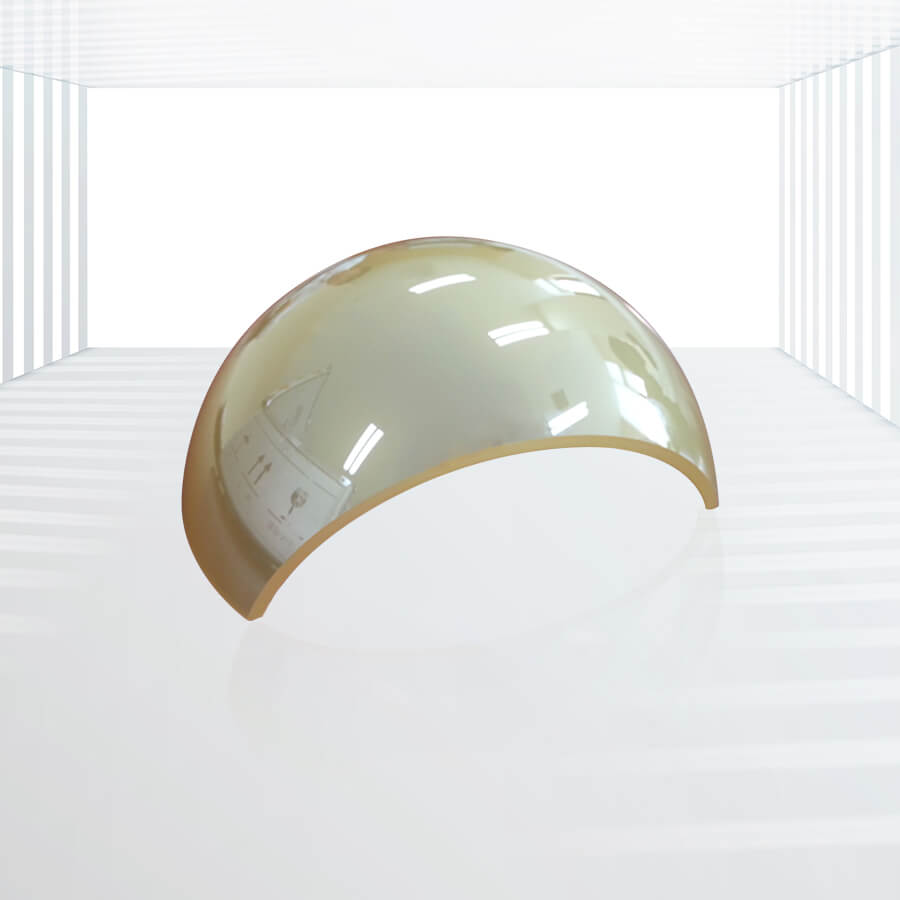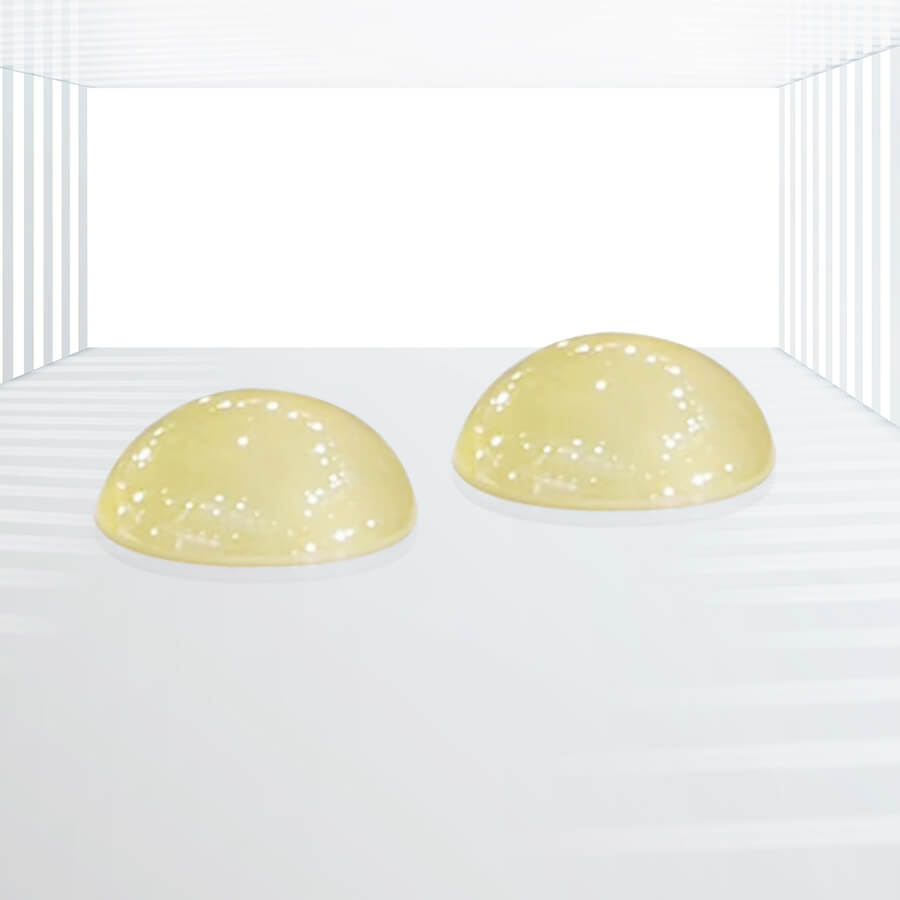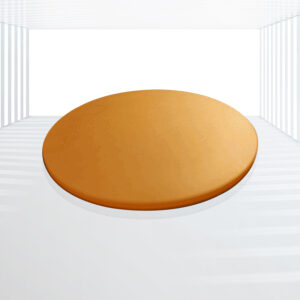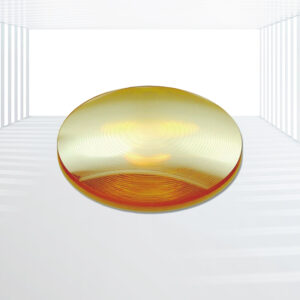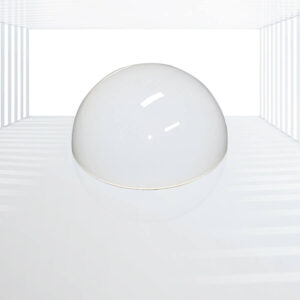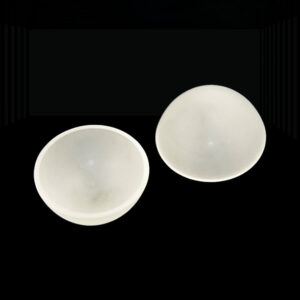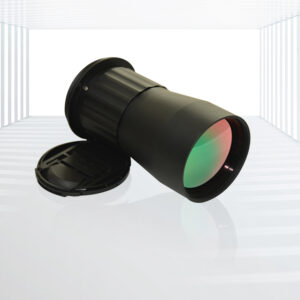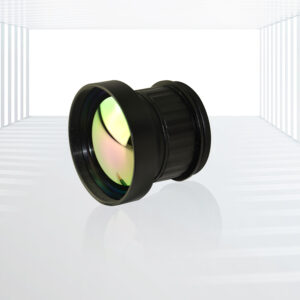Zinc Selenide (ZnSe) Domes
Flexural Strength: ZnSe’s flexural strength is lower than the 20,000 psi criterion but can be enhanced with coatings.
Knoop Hardness: At ~120 kg/mm², ZnSe is softer compared to other materials like sapphire.
Optical Transmission: ZnSe offers excellent transmission in the MWIR range, making it ideal for thermal imaging.
Thermal Properties: ZnSe has good thermal conductivity and a moderate thermal expansion coefficient, making it stable under varying temperatures.
Applications: IR optics, thermal imaging, missile domes, targeting systems, night vision, aerospace optics, etc.
Zinc Selenide (ZnSe) is a popular material for infrared optical components due to its excellent transmission properties and mechanical characteristics. Below is a detailed overview addressing the specific requirements and applications you mentioned.
Key Properties of ZnSe Domes:
1.Flexural Strength: ZnSe typically has a flexural strength around 8,000 to 10,000 psi, which is lower than 20,000 psi. However, ZnSe can be engineered or coated to enhance its strength.
2.Knoop Hardness: ZnSe has a Knoop hardness of approximately 120 kg/mm², which is significantly lower than 1350 kg/mm². This makes ZnSe less resistant to scratching compared to harder materials like sapphire.
3.Optical Transmission:
- High transmission within the 2μm to 7.5μm range.
- Excellent for MWIR (Mid-Wave Infrared) thermal imaging.
- Also transmits well in the Long-Wave Infrared (LWIR) range (7.5μm to 15μm), adding versatility for various infrared applications.
4.Applications:
- Defense: ZnSe domes are used in IR missile domes, targeting systems, and infrared sensors.
- Security: Employed in thermal imaging cameras for surveillance and night vision systems.
- Aerospace: Used in optical systems for aircraft and spacecraft, providing infrared transparency and environmental durability.
Advantages of ZnSe Domes:
- Optical Clarity: Superior transmission in the MWIR range, essential for high-quality thermal imaging.
- Low Absorption: Low bulk absorption, which minimizes heating effects in high-power applications.
- Chemical Resistance: ZnSe is chemically stable and resistant to environmental degradation, ensuring longevity in various conditions.
- Versatility: Suitable for a wide range of infrared applications, including MWIR and LWIR.
Considerations for ZnSe Domes:
- Mechanical Strength: While ZnSe does not meet the >20,000 psi flexural strength criterion inherently, it can still be used effectively in applications where mechanical stress is moderate, or where additional protective coatings and treatments can enhance durability.
- Hardness: ZnSe’s lower hardness compared to other materials like sapphire means it may be more prone to scratching, but this can be mitigated with proper handling and maintenance.
Physical and Optical Properties:
| Transmission Range | 0.6 to 21.0μm |
| Flexural Strength | 8,000 – 10,000 psi |
| Refractive Index | 2.4028 at 10.6μm |
| Reflection Loss | 29.1% at 10.6μm (2 surfaces) |
| Absorption Coefficient | 0.0005 cm-1 at 10.6μm |
| Reststrahlen Peak | 45.7μm |
| dn/dT | +61 x 10-6 /°C at 10.6μm at 298K |
| dn/dμ = 0 | 5.5μm |
| Thermal Conductivity | 7.1 x 10-6 /°C at 273K |
| Melting Point | 1525°C (see notes below) |
| Density | 5.27 g/cc |
| Hardness | Knoop 120 with 50g indenter |
| Bandgap Energy | 2.7 eV at 300 K |
| Specific Heat Capacity | 339 J Kg-1 K-1 |
| Bulk Modulus (K) | 40 GPa |
| Youngs Modulus (E) | 67.2 GPa |
| Shear Modulus (G) | n/a |
| Dielectric Constant | n/a |
| Elastic Coefficients | Not Available |
| Apparent Elastic Limit | 55.1 MPa (8000 psi) |
| Poisson Ratio | 0.28 |
| Solubility | 0.001g/100g water |
| Molecular Weight | 144.33 |
| Class/Structure | HIP polycrystalline cubic, ZnS, F43m |
ZnSe domes offer excellent optical transmission in the MWIR range, making them suitable for thermal imaging and infrared applications in defense, security, and aerospace. While ZnSe does not meet the extreme mechanical strength and hardness criteria, it remains a viable option due to its superior infrared transmission and chemical stability. For applications where mechanical robustness is less critical or can be enhanced, ZnSe remains a valuable material choice.

